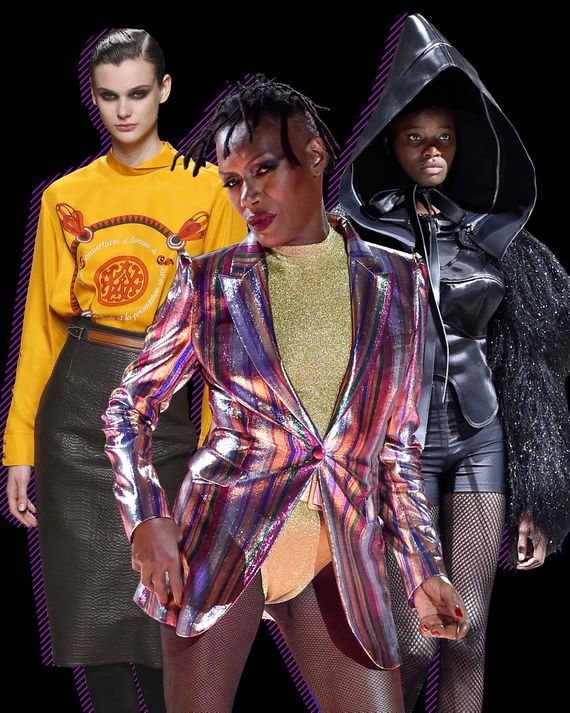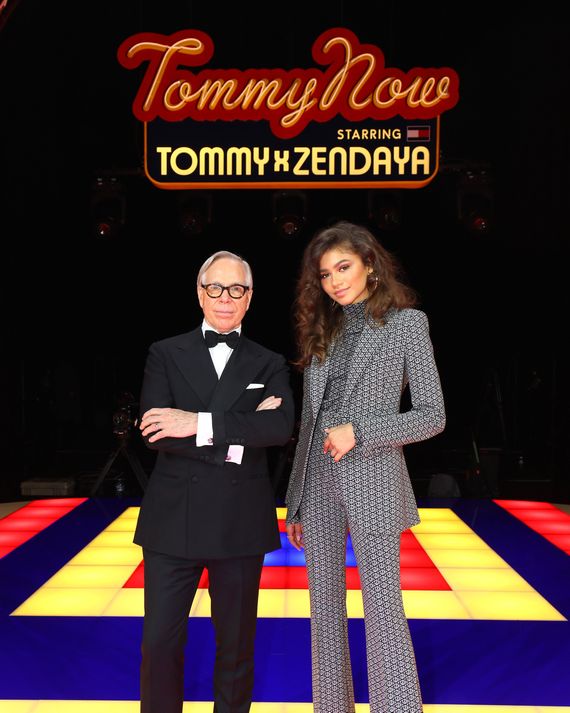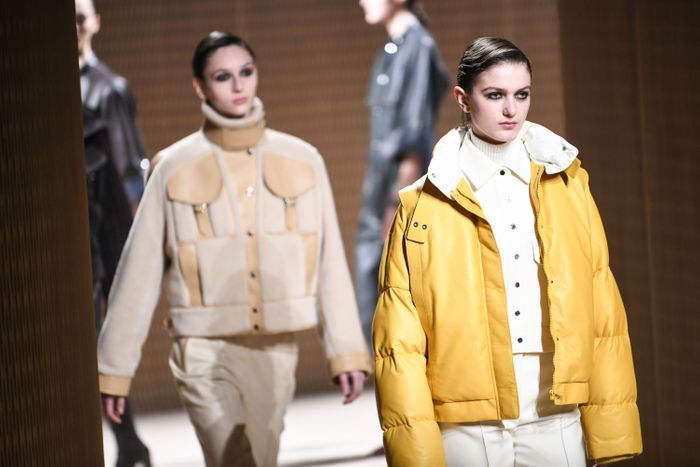
Put 70-year-old Grace Jones in a metallic leather jacket and gold mesh bodysuit on your runway and you’ve got yourself a hit. Tommy Hilfiger brought the pop star out at the end of his latest celebrity collaboration last night — with the actress and singer Zendaya — which toasted diversity, in race as well as age and size, with a cast that included Beverly Johnson, Pat Cleveland, and Veronica Webb.
For Zendaya, the Hilfiger platform — in the middle of Paris Fashion Week — was a great way to call attention to the general lack of diversity in the entertainment and fashion industries, not just on the catwalk but in power positions. And let’s hope that Hilfiger, 67, who has built his name and fortune by selling images of white privilege — with recent collections evoking the Ivy League, Mustique, and Savile Row — makes true diversity his business, because he hasn’t always in the past.
Even without such overt messaging, though, designers are making powerful statements about feminine strength and self-representation.
At Hermès, Nadège Vanhee-Cybulski opened with black leather, lots of it — hot pants, sharp coats, and little fanny purses emblazoned with an H. Given that the soundtrack had a hard, thumping beat, I wouldn’t have been surprised if one of the kohl-eyed models had suddenly produced a whip from her tiny purse. And I don’t mean the equestrian kind.
Seriously, though, it was great to see Vanhee-Cybulski venture into more daring territory for classical Hèrmes. Designers should be free to explore and propose, and she has already demonstrated that she can do light, eclectic sportswear, as she did in her dazzling spring show. Apart from the hot pants, the mood of this collection was strict and rather buttoned-up, with pencil skirts in textured leather shown with matching boots and long-sleeve, mock-turtleneck tops in solid hues of orange and moss silk that were a novel treatment of the house’s famous scarves.
Also eye-popping, if in a different way, were oversize parkas and a leather boilersuit. What I loved most about this collection, even when it was a little off-putting, was that it conjured a world of tastes and desires that I can only imagine.
Joseph Altuzarra offered a far more wide-ranging collection this season than for spring, leading off with terrific outerwear — in fringed black leather, shearling and leather with a wide fleece collar — and mixing in elegant dresses in pleated paisley georgette. The clothes generally had a strong sense of glamour grounded by an urban toughness.
“I love combining the beautiful with the grotesque,” said Jun Takahashi, explaining why he based his imaginative Undercover collection on Luca Guadagnino’s remake of Suspiria. Takahashi got permission to use frames from the film as prints for long dresses and voluminous coats, which featured the extra element of fat, down-filled sleeves that you could add to the look — the sleeves were connected by a strap worn around the neck. Their volume, on the one hand, suggested classical couture, and, on the other, body mass or strength. Much of the collection was a smart Takahashi hybrid of streetwear and elegant couture shapes, colored by the dusty pastels and earth tones of the film.
But the most assertive and individual expressions of female strength have so far come from Rei Kawakubo of Comme des Garçons and Balmain’s Olivier Rousteing. I admit they’re an odd couple, but after seeing Kawakubo’s three-dimensional shapes in black rubber and faux-leather I saw a connection to Rousteing’s extreme sculptural shapes, especially his short, rippling skirts in black patent leather and shoulders jetting away from the body or mobbed with dense, 3-D flowers. Like Kawakubo, he creates garments with orifices — a dotted black sheer top with black pants, for example, framed by a sharply cut cape. Rousteing’s clothes have lately looked more and more over-the-top, and I think that’s a sign of someone in revolt and trying to further expand the definition of female beauty and glamour.
Kawakubo’s approach is more that of an artist. From her working title — “a gathering of shadows” — and from the piercing music, the black executioner hoods, and armor-like shapes, one could infer that she was commenting on a political or ecological crisis. A few jackets were stitched with small brass hardware — knobs, pulls, coat hooks — as if they were the detritus of a wrecked civilization. And of course, as always, most of her garments are deconstructed.
But my own reading was that she was showing women armed to the teeth with confidence and provocation. Hence the garments, with fishnet underpinnings, that revealed more of the body than we usually see from Kawakubo. Although she has done sculptural shapes that are just that — strange objects to ponder and admire — many of these were wearable.
Not only that but they flirted between being aggressive and incredibly sensuous and elegant, like a coat made of long slices of leather belted over black fishnet, and a similar leather shell with bulbous shoulders worn over a black taffeta dress with babyish frills down the front. To me, they hinted of a style somewhere in the future.












